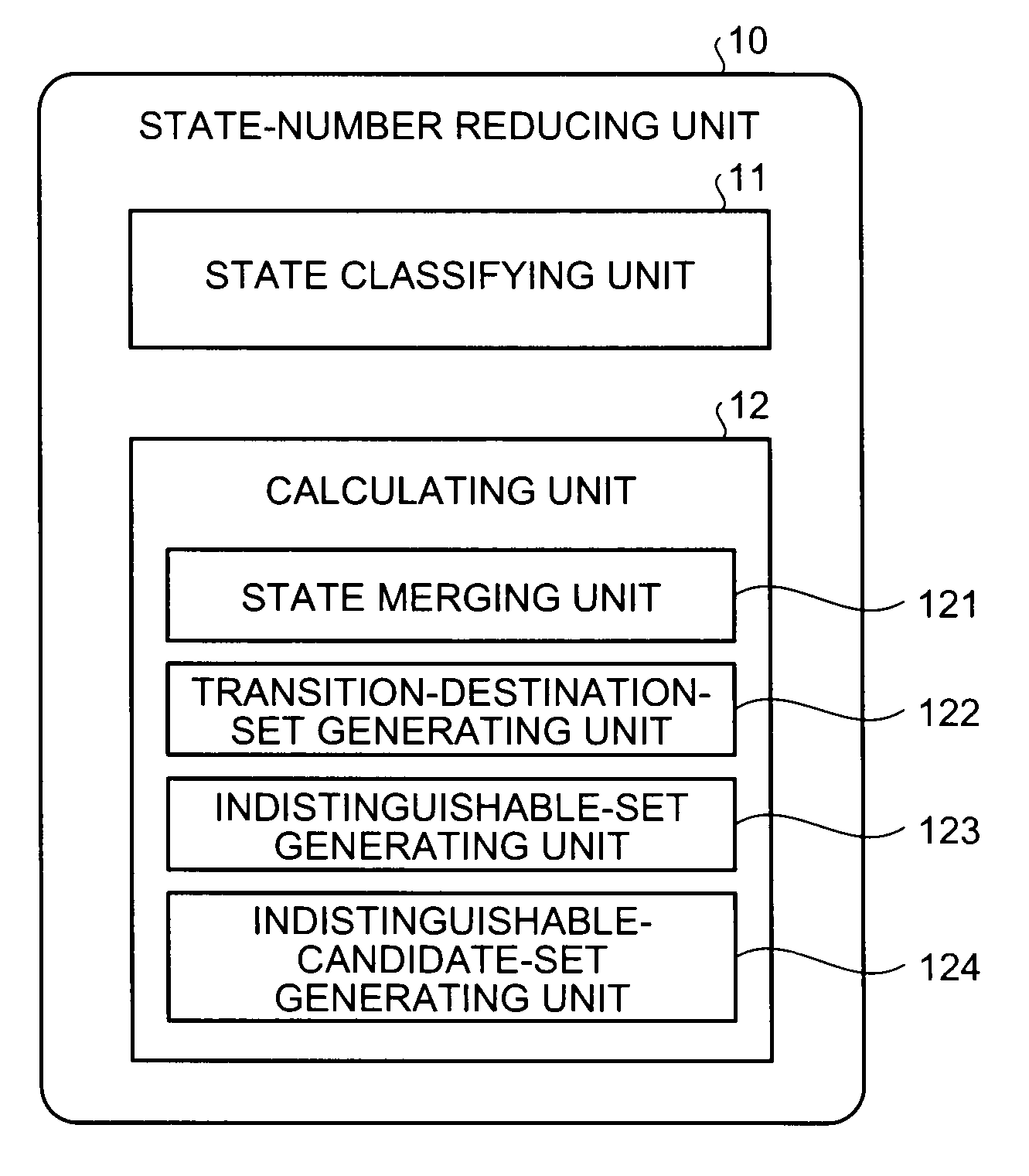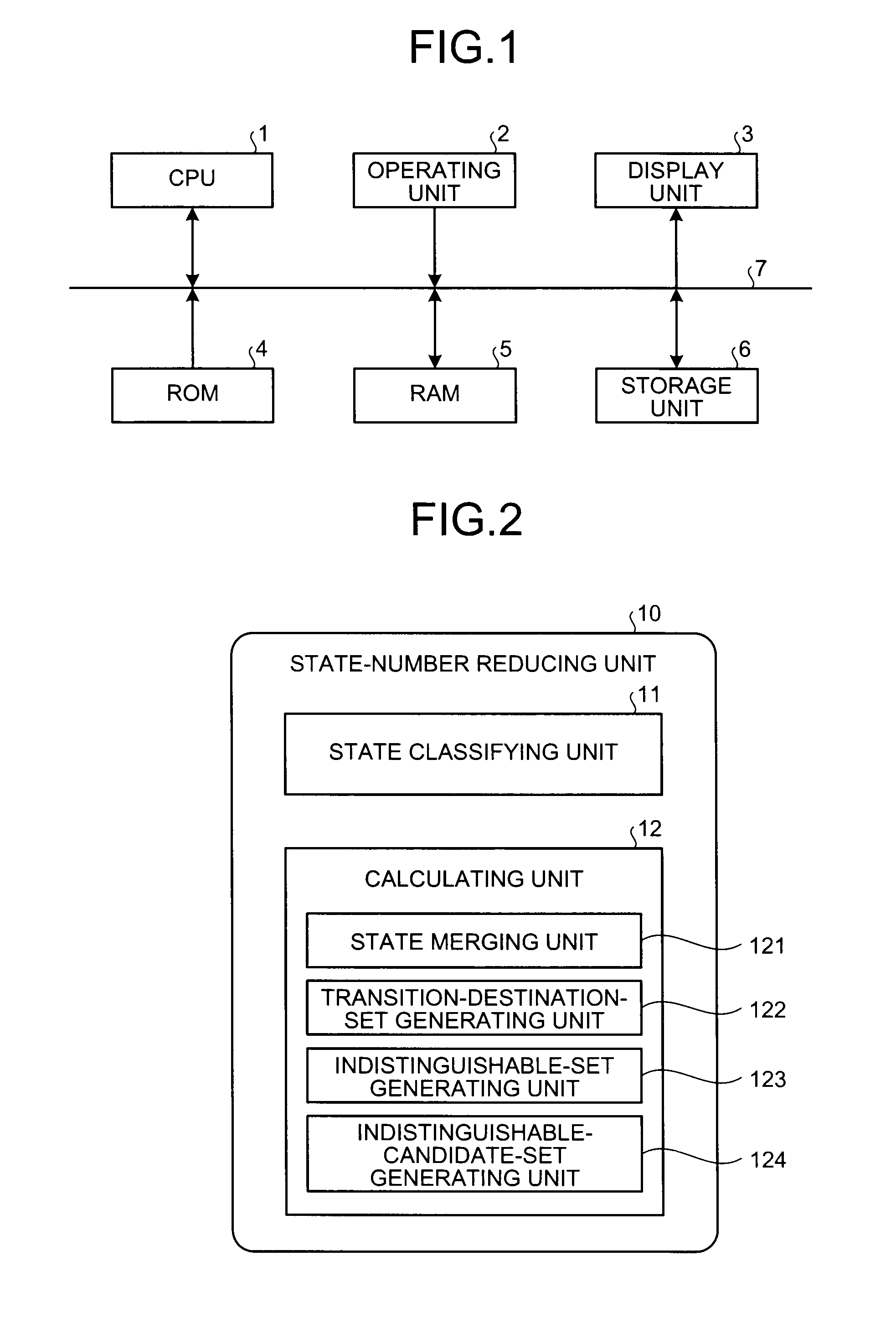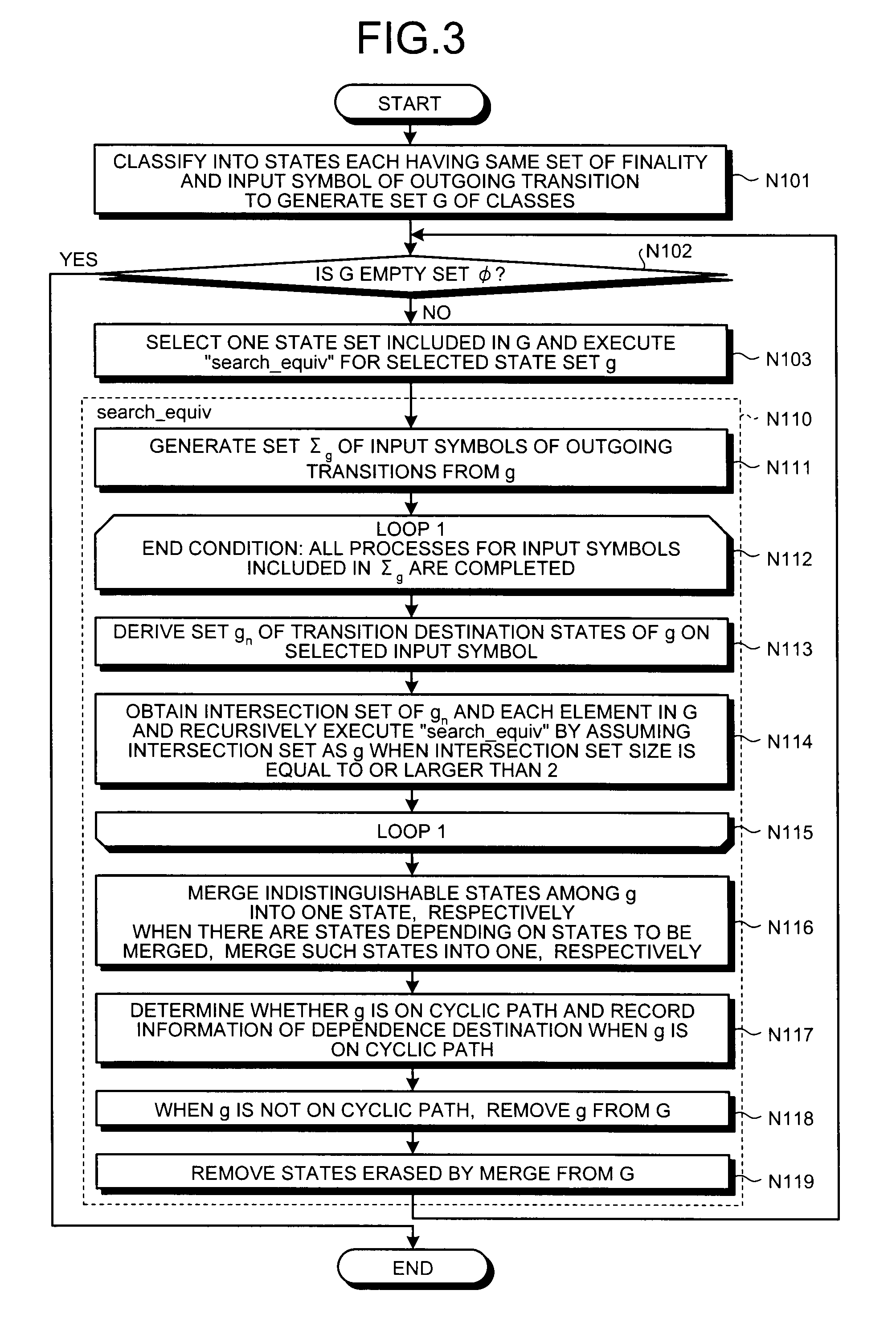Information processing apparatus, information processing method, and computer program product for reducing states in a deterministic finite state automaton
a technology of deterministic finite state and information processing apparatus, which is applied in the direction of computation using denominational number representation, pulse technique, instruments, etc., can solve the problems that the reduction of the number of states in a large-scale dfa that requires much time for the minimization process cannot be achieved incrementally, and the immediate result cannot be obtained
- Summary
- Abstract
- Description
- Claims
- Application Information
AI Technical Summary
Benefits of technology
Problems solved by technology
Method used
Image
Examples
first embodiment
[0082]A state-number reducing process performed by the state-number reducing unit 10 is explained below. Steps denoted by Step N110 (Steps N111 to N119) in FIG. 3 indicate details of processing performed by the calculating unit 12.
[0083]The state classifying unit 11 first classifies the states included in the DFA as the processing target according to finality of the states and types of input symbols associated with outgoing transitions (Step N101).
[0084]The state classifying unit 11 then determines whether the set G having the sets g classified at Step N101 as elements is an empty set φ (Step N102). When determining that the set G is not an empty set φ (NO at step N102), the state classifying unit 11 selects one of the sets g included in the set G and hands over the processing to the calculating unit 12 (Step N103).
[0085]The calculating unit 12 generates a set Σg of input symbols associated with outgoing transitions for each of the states included in the set g selected at Step N103...
fifth embodiment
[0172]The state merging unit 121 then returns the set Qe obtained in the previous processes, that is, a set of the unnecessary states as a return value to the calculating unit 12, and returns to the processing of “search_equiv” again. When the processing is interrupted during the processes at Steps N304 to N313, the DFA having the states reduced by the previous processes cannot be obtained. Accordingly, the configuration can be adapted to enable a control to prevent interruption of the processing during the processes at Steps N304 to N313, like in the present invention explained later.
[0173]The subprogram “search_sharable_state_candidate” at Step N258 is explained with reference to FIG. 10.
[0174]In FIG. 10, an element ψ and an element ψstart correspond to a set of 2-tuples (dependence source state, dependence destination state), and a set Ψ corresponds to a set of 2-tuples (ψ, location of a dependence destination state in the stack S). A set Y is a set having the sets Ψ as elements,...
second embodiment
[0297]FIG. 26 is a block diagram of a functional configuration of an information processing apparatus according to the As shown in FIG. 26, the information processing apparatus includes a state-number reducing unit 20 as a functional unit that is realized by the CPU 1 in cooperation with the predetermined program previously stored in the ROM 4 or the storage unit 6.
[0298]The state-number reducing unit 20 includes the state classifying unit 11 and a calculating unit 21. The state-number reducing unit 20 executes the main program “simin” to incrementally reduce the number of states in the DFA as the processing target.
[0299]The calculating unit 21 includes the state merging unit 121, the transition-destination-set generating unit 122, the indistinguishable-set generating unit 123, the indistinguishable-candidate-set generating unit 124, and an execution-status determining unit 211 as shown in FIG. 26. The calculating unit 21 executes a subprogram “search_equiv2” corresponding to the s...
PUM
 Login to View More
Login to View More Abstract
Description
Claims
Application Information
 Login to View More
Login to View More - R&D
- Intellectual Property
- Life Sciences
- Materials
- Tech Scout
- Unparalleled Data Quality
- Higher Quality Content
- 60% Fewer Hallucinations
Browse by: Latest US Patents, China's latest patents, Technical Efficacy Thesaurus, Application Domain, Technology Topic, Popular Technical Reports.
© 2025 PatSnap. All rights reserved.Legal|Privacy policy|Modern Slavery Act Transparency Statement|Sitemap|About US| Contact US: help@patsnap.com



